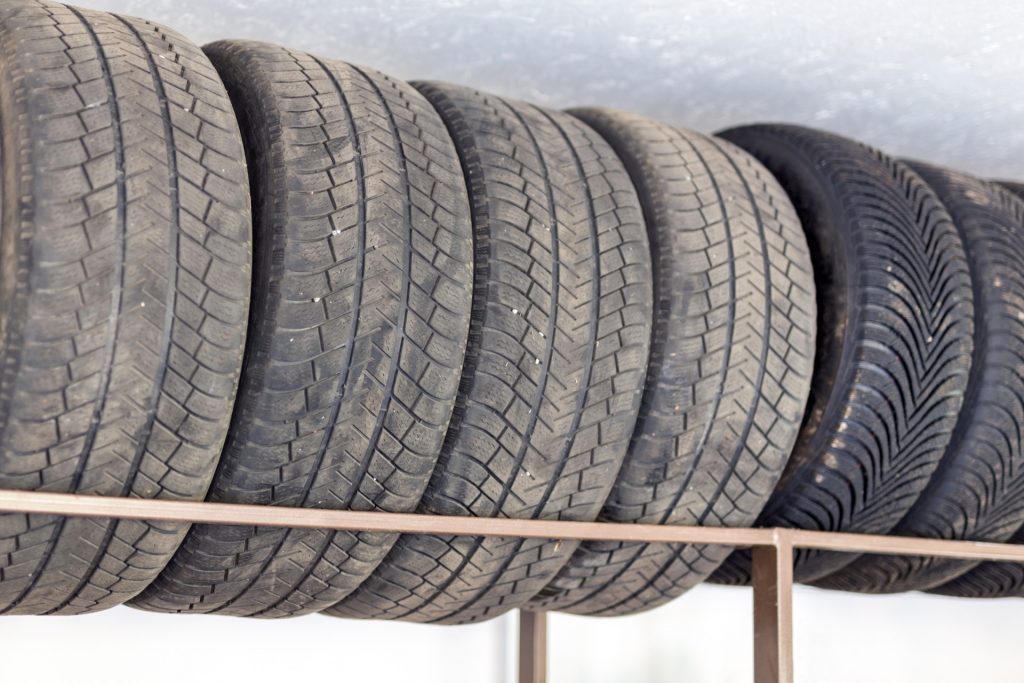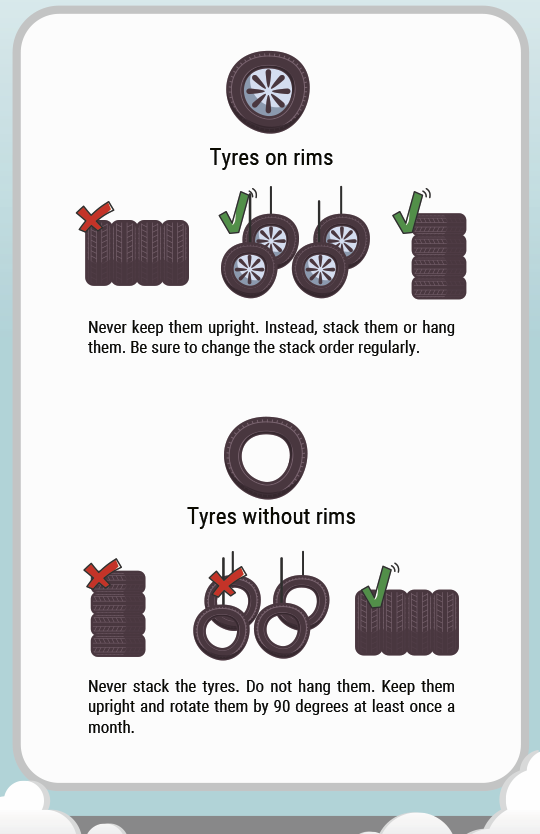How to Store Rims
To store rims, place them vertically in a tire rack to prevent damage and save space. Keep them in a cool, dry place away from moisture and direct sunlight.
Storing rims properly not only protects them but also prolongs their lifespan, ensuring they are ready for use when needed. This simple maintenance practice can prevent rusting or warping, preserving the performance and appearance of the rims. By following these storage tips, you can keep your rims in optimal condition and maintain the value of your vehicle.
Make sure to check them regularly for any signs of wear and tear and address any issues promptly to avoid any potential damage.

Credit: topgradetire.com
Choosing A Storage Location
Rims are critical components of your vehicle, and proper storage is essential to maintain their condition. Choosing the right storage location for your rims will ensure they remain in top condition and ready for use when needed.
Indoor Vs. Outdoor
When it comes to storing rims, one of the first decisions you need to make is whether to opt for indoor or outdoor storage. Indoor storage offers better protection from the elements, such as extreme temperatures, moisture, and UV rays. On the other hand, outdoor storage may be necessary if indoor space is limited, but it exposes the rims to weather-related damage.
Considerations For Indoor Storage
- Choose a dry and clean area to prevent moisture and dirt buildup on the rims.
- Consider using tire racks or wall-mounted storage systems to keep the rims off the ground and organized.
- Ensure the indoor storage location is free from excessive temperature fluctuations that could affect the rims’ materials and finish.
Considerations For Outdoor Storage
- Use weatherproof covers to shield the rims from rain, snow, and direct sunlight.
- Secure the outdoor storage area to prevent theft, and consider using wheel locks for added security.
- Regularly inspect the rims for signs of corrosion or damage caused by outdoor elements.

Credit: redats.com
Preparing The Rims
Before storing your rims, it’s crucial to make sure they are properly prepared to maintain their quality. This includes cleaning the rims, inspecting for any damage, and, if applicable, removing tires.
Cleaning The Rims
- Use mild soap and water to clean off dirt and debris.
- Scrub gently with a soft brush to avoid scratching the rims.
- Rinse thoroughly and dry completely before storage.
Inspecting For Damage
- Check for any cracks, bends, or corrosion on the rims.
- Ensure there are no missing or loose bolts.
- Address any damage before storing to prevent further issues.
Removing Tires (if Applicable)
If your rims have tires, it’s best to remove them before storage to prevent flat spots and damage.
Proper Stacking And Storage Methods
Using Tire Racks
Tire racks are ideal for storing rims to prevent damage. Install racks in a cool, dry location.
Individual Rim Storage
Store each rim individually to avoid scratches and dents. Use protective covers or bags.
Stacking And Securing Rims
When stacking, ensure rims are evenly aligned to prevent wobbling. Use straps to secure the stack.
Protective Measures
When it comes to storing rims, it is essential to take protective measures to ensure they remain in optimal condition. By implementing the right strategies, you can prevent damage and extend the lifespan of your rims.
Using Wheel Bags Or Covers
Wheel bags or covers are a simple yet effective way to safeguard your rims from scratches and dings during storage. These protective accessories provide a barrier against moisture and dust, helping to maintain the pristine condition of your rims.
Applying A Protective Coating
Applying a protective coating to your rims can offer an additional layer of defense against corrosion and abrasions. By using a high-quality protective coating, you can shield your rims from environmental elements, preserving their appearance and structural integrity.
Maintenance And Monitoring
To properly store rims, it is important to perform regular maintenance and monitoring. This ensures that the rims stay in good condition and are ready for use when needed. Regular cleaning, inspection for damage, and proper storage can extend the lifespan of the rims and prevent any unexpected issues.
Maintenance and Monitoring Proper maintenance and regular monitoring are essential when it comes to storing your rims. By following a few simple steps, you can ensure that your rims stay in optimal condition, ready to be mounted on your vehicle whenever you need them. In this section, we will discuss regular cleaning and inspection, as well as checking for moisture or humidity and addressing any issues that may arise.Regular Cleaning And Inspection
Regular cleaning and inspection are crucial for keeping your rims in top shape. Here are a few steps you can follow: 1. Start by cleaning the rims with a mild soap and water solution. Avoid using harsh chemicals that can potentially damage the rims’ finish. 2. Use a soft bristle brush or sponge to gently scrub the rims, paying close attention to any areas with dirt or grime buildup. 3. Rinse the rims thoroughly with clean water to remove any remaining soap residue. 4. Once the rims are clean, inspect them closely for any signs of damage or wear. Look for scratches, dents, or any abnormalities that could affect the rims’ performance. 5. Pay special attention to the valve stems and the seal between the rim and the tire. If you notice any leaks or cracks, it’s important to address them immediately to prevent further damage.Checking For Moisture Or Humidity
Moisture and humidity can be detrimental to the condition of your rims, causing rust and corrosion. Follow these steps to check for and prevent any moisture-related issues: 1. Inspect the storage area for signs of moisture or humidity. Look out for water leaks, condensation, or mold growth. 2. Ensure that the storage area is properly ventilated to prevent the buildup of moisture. Consider using a dehumidifier or desiccant packets to absorb excess moisture. 3. Place a moisture absorbent material, such as silica gel packets, near the rims to help keep the surrounding air dry. 4. Regularly monitor the storage area for any changes in humidity levels. This can be done using a hygrometer, which measures the moisture content in the air.Addressing Any Issues
If you come across any issues during the cleaning and inspection process, it’s crucial to address them promptly. Here’s what you can do: 1. For minor scratches or scuffs, you can use touch-up paint or a rim repair kit to fix the damage. 2. If you notice any significant damage, such as bent or cracked rims, it’s best to consult a professional for repair or replacement. 3. Address any tire-related issues, such as low tire pressure or worn-out treads, to ensure optimal performance and safety when using the rims. Remember, proper maintenance and regular monitoring are key to prolonging the lifespan of your rims and preventing any potential issues. By following these simple steps, you can keep your rims in great condition, ready to be installed whenever you’re ready to hit the road.
Credit: thetiredigest.michelin.com
Frequently Asked Questions For How To Store Rims
Should Tires On Rims Be Stored Flat Or Upright?
Tires on rims should be stored flat to prevent distortion. Storing them upright can cause pressure on one side, leading to misshaping.
How Do You Store Old Rims?
To store old rims properly, clean and dry them first. Stack them horizontally in a cool, dry area. Cover them to protect from dust and scratches. Avoid stacking too high to prevent damage. Regularly check for rust and maintain as needed.
How Do I Protect My Wheels In Storage?
To protect your wheels in storage, regularly clean and dry them, apply a protective coating, and store them in a cool, dry place. Use wheel bags or covers to prevent scratches and damage. Check and adjust tire pressure before storing.
Can You Store Rims Outside?
Yes, you can store rims outside, but it’s best to protect them from weather and theft. Consider using a protective covering and securing them. Regular cleaning and maintenance are essential to prevent damage.
How Should I Store My Rims To Prevent Damage?
To prevent damage, store rims in a clean, dry area away from extreme temperatures and sunlight.
Can I Stack My Rims On Top Of Each Other?
Avoid stacking rims on top of each other as it can cause scratches and other damages. Instead, store them individually.
Should I Use Wheel Covers When Storing Rims?
Using wheel covers is a great way to protect your rims from dust and scratches while they are in storage.
Conclusion
Properly storing your rims is crucial for maintaining their performance and longevity. By following these storage tips, you can prevent damage and ensure they are ready for use when needed. Remember to clean, protect, and store them in a cool, dry place to preserve their quality.
Your future rides will thank you!

